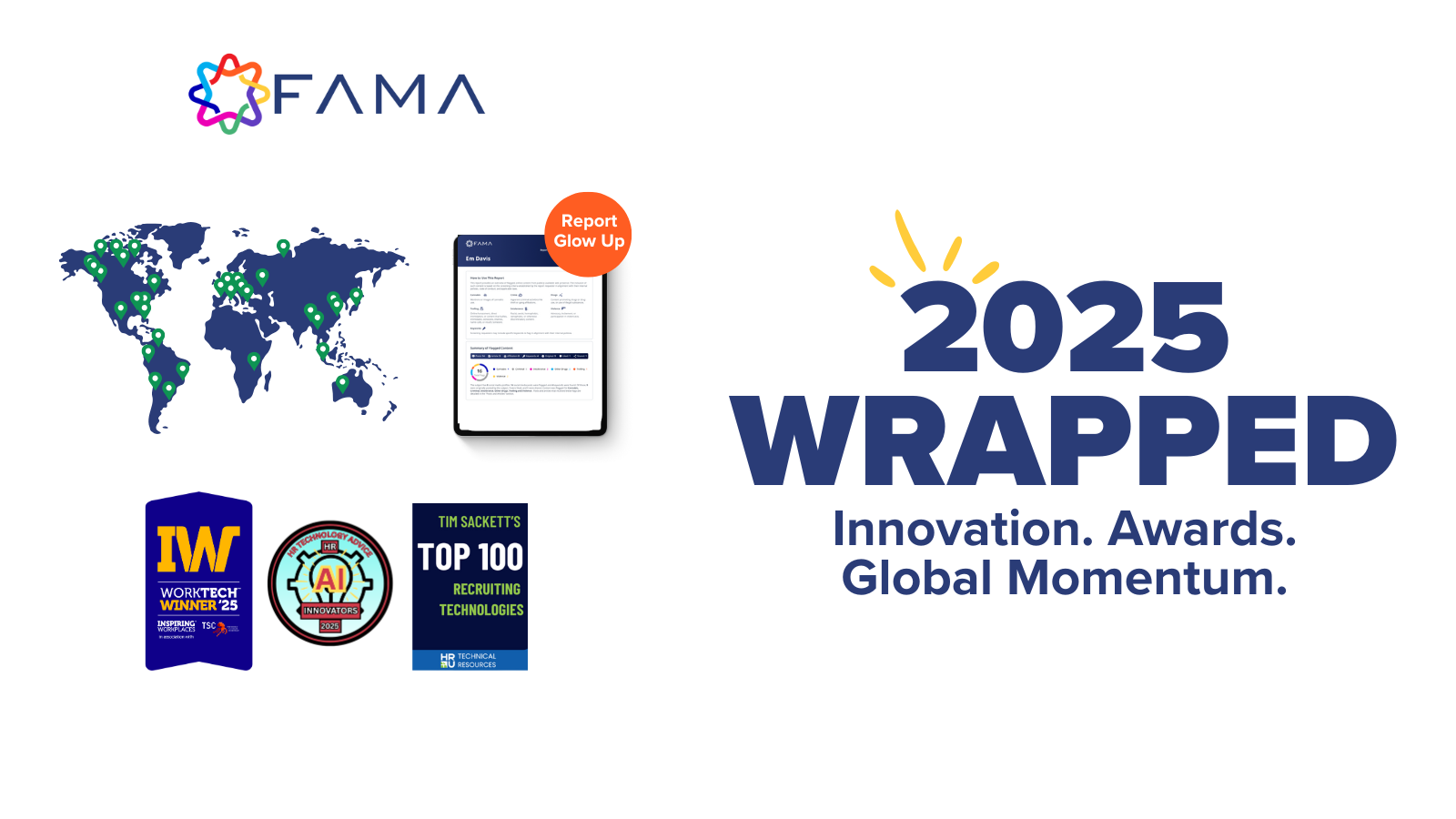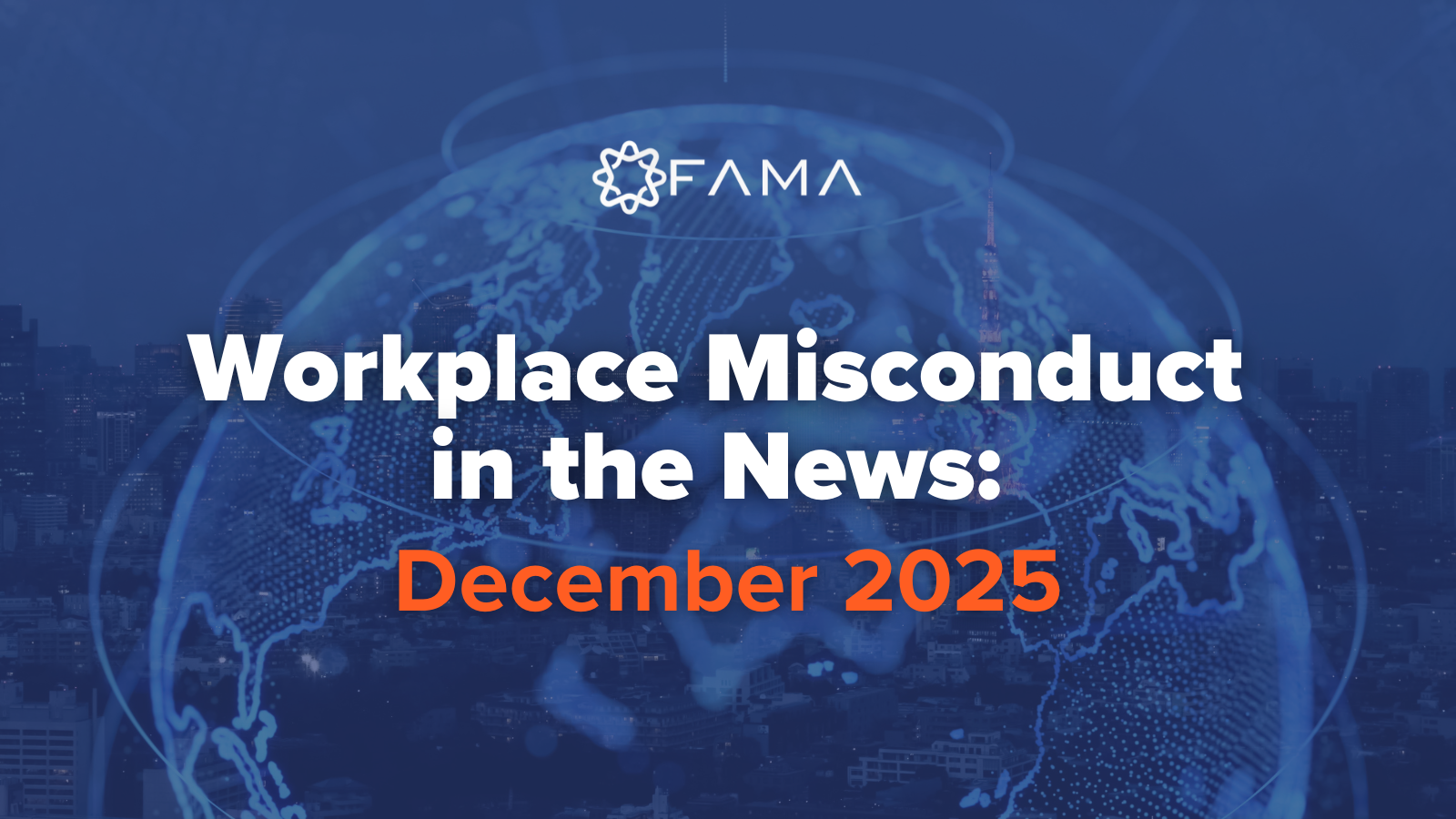What You Need To Know About Workplace Misconduct

Over the past couple of months, we’ve been talking quite a lot about online screening and workplace misconduct.
We’ve talked about how common misconduct at work is in articles like Workplace Misconduct in the News: Employee, Executive, and Investment Misconduct - Q1 2023 and Workplace Misconduct in the News - February 2023.
We’ve offered strategies and best practices for identifying and preventing workplace misconduct in posts like 5 Easy Ways to Identify and Prevent Workplace Misconduct in 2023 and Understanding and Preventing Fraud and Workplace Misconduct in 2023.
And, we’ve talked a lot about how companies and investors can use technology to help them avoid and manage misconduct issues - from hiring, human resources, executive search, and investment operations perspectives - in content like 5 Types of Work Tech Solutions to Identify and Prevent Workplace Misconduct (and the pros and cons of each) and How Fama's Online Screening Solution Detects Misconduct at Work.
We even launched a new team “Fama Labs” who published our first research project of the year, which explored How Online Screening Can Impact Quality of Hire as well as the relationship between seniority and misconduct.
Today, we’re going back to the basics. If you’re wondering what workplace misconduct is, who engages in it, who can help your organization prevent it, and how technology can support your efforts, this article is for you.
What is Workplace Misconduct?
Workplace Misconduct is illegal, criminal, or other behavior that isn't appropriate for work. That includes things like occupational fraud, theft, corruption, bribery, threats, violence, bullying, harassment, discrimination, and overall violations of an employer’s code of conduct.
These workplace violations have major implications for companies, including:
- Fraud costs organizations 5% of annual revenues
- Harassment costs organizations $300 to $1,000 per employee per year
- Overall, employee misconduct costs US companies approximately $20 billion a year
The stakes are high. The SEC, FTC, and other regulatory bodies are cracking down. It's time for companies to take steps to actively prevent misconduct at work.
This prevention can and should start in the hiring process.
Who commits misconduct at work?
Before we talk about prevention and managing workplace misconduct, though, it’s important to understand who can engage in misconduct at work.
Unfortunately, the answer is anyone. Anyone can engage in workplace misconduct.
Workplace Misconduct is a lot more common than many think. It might look like an employee who misappropriates company assets, a contingent worker who steals something, a vendor who bribes employees for contacts, an executive who sexually harasses staff, or even an influencer who misleads brands to get deals.
Any type of worker can engage in harmful misconduct, including:
- Employees
- Executives
- Contingent Workers
- Vendors
- Influencers
- and more
Recognizing the stakeholders involved in different types of misconduct is an important step in prevention and action.
What stakeholders can protect organizations from misconduct at work?
Identifying key internal and external stakeholders that can protect your organization in identifying, preventing, and navigating misconduct at work is critical. Several internal employees and external partners can help companies identify, prevent, and act on misconduct at work. Engaging these stakeholders regularly can help companies reduce risk and avoid costly legal action and financial damages.
Internal partners include:
- Human Resources
- Talent Acquisition
- Procurement
- Marketing
- Risk, Legal, and Compliance
- IT Teams
- Investment Operations
External partners include:
- Executive Search firms
- Staffing firms
- Marketing Agencies
- Private Investigators
- Background Screening partners
- Online screening partners
How Can Companies Protect Themselves from Misconduct at Work?
With the right stakeholders and partners in place, companies can adopt the right processes, procedures, and technologies to create a safe and inclusive work environment that their employees will love and thrive in.
There are several ways to achieve this goal and avoid workplace misconduct. Some strategies can look like forcing employees to take time off (yes, really!), adopting advanced online screening and whistleblower solutions, and looking for behavioral signs that often go unnoticed.
How Fama helps organizations prevent workplace misconduct
Here at Fama, we’ve made it our mission to help organizations create safe and inclusive workplaces. And, we achieve that by helping them actively avoid and prevent misconduct at work.
Our online screening solution has AI-based compliance filters that screen candidate’s public information online and flags content that shows or suggests misconduct. The tool looks for issues like:
- Crime and Illegal Activity
- Threats and Violence
- Corruption and Fraud
- Harassment and Intolerance
- Sexual Misconduct
- Drugs
We remove all protected-class information allowing employers, staffing and executive search firms, and investors to safely assess quality of hire.
Conclusion
Here at Fama, we’re really excited about the future. We’re looking forward to helping companies avoid workplace misconduct, prevent costly legal action, and improve their quality of hire and investment partner. And, we absolutely love helping organizations hire and invest in great people - and only great people.
Over the next few months, we'll be launching even more new resources to help you recognize the signs and navigate these tricky situations. We’ll be talking about employee misconduct, executive misconduct, investor misconduct, and maybe even influencer fraud and misconduct.
For more information, sign up to our newsletter for quarterly updates, or skip the line and schedule a demo to learn how Fama can help your organization today.
Get the Newsletter
Recent Blog Posts

Fama’s 2025: A Year of Innovation, Impact, and Global Momentum









